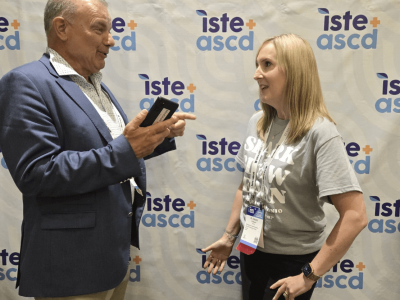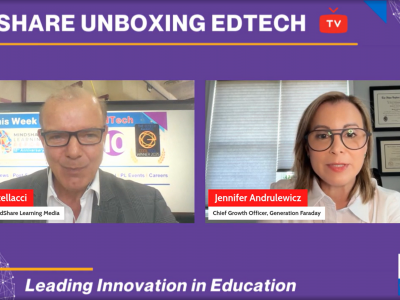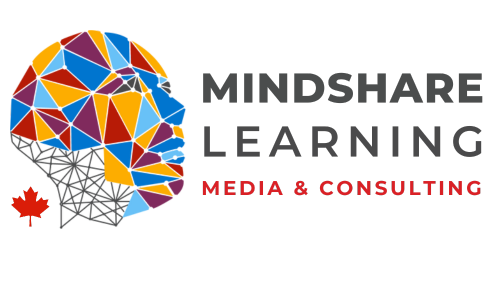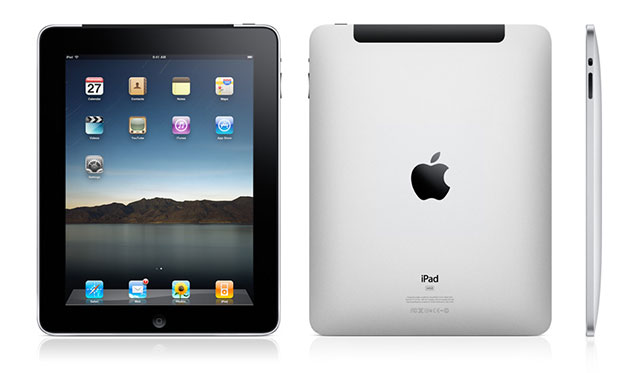By Timothy Gard
Educator, Toronto District School Board
Twitter @
MindShareK12
Many have touted Epson’s interactive
Brightlink 455wi projector as game changing technology. This technology enables the user to interact with any surface using a high lumen ultra-short throw projector and infrared pen. You do not need an interactive whiteboard or any particular board at all in order to interact with what the projector projects from your computer – it’s board-free, so to speak. The ‘interaction’ occurs between the pen, projector and computer. What’s the big deal? Well, if you don’t need a board then you cut down on expense, not to mention the hassle of installation which, in my experience at least, has been painful. Epson has even gone to great length to market to cash-strapped school districts and schools the money they’ll save if they go with their more ‘compact’ system, even providing an online cost-calculator which can be used to estimate the money a school would save if they purchased their product versus one of the competing board-based products. The mantra is “save money, buy an interactive projector!” Or so the story goes. Epson also includes RM’s software, Easiteach Next Generation.
RM redesigned Easiteach, hence the moniker, “Next Generation.” This software has been around for a while, but I believe it has proven to be more popular in the UK then in North America. Easiteach is not board-specific and so you can use it with any interactive whiteboard. Is the Epson Brightlink projector a ‘game-changer’ and is it really worth the dollar savings?
Epson by all accounts designs great projectors. We have five at our school and we’re happy with them. The projected image is crisp and clear and colour representation is pretty accurate. The Brightlink projector continues on with Epson’s tradition of image excellence. And since it’s an ultra-short throw projector you get far less shadow then in other projector systems. I haven’t had any issues with the display quality. It is superior in all regards.The installation of the product is fairly simple and intuitive as well. Epson has made every effort to provide you with a number of tools to help you install and configure the projector quickly and efficiently. If you follow the instructions included in the package or check their resources out online you’re more than likely going to get this projector installed the correct way with minimum fuss. Once the projector is mounted you can play with the projector’s display parameters using either the menu or by manipulating the projector itself. Again, easy work for tradespeople which makes them happy which in turn makes teachers happy. To be short, teachers do not want to have to spend time playing with any part of a projector or interactive whiteboard in order to get it to work correctly. Frustration leads to abandonment! Configuring the pen, projector and computer are also fairly easy to do. I did have issues with the first generation pen but Epson quickly identified the problem and replaced the pen I was using so that it worked as intended. Since the pen is wireless using I’m not sure about interference issues at this point. You might want to check with Epson about possible interference from things like classroom sound systems. I do believe that this was another issue that was identified but has since been resolved with the newest generation of Brightlink projector. To read all of the specifications for this product and to get further information about cost and to get access to other resources you can go to Epson’s Brighter Futures website.What about the interactive Brightlink projector in the classroom?
Let me make three observations about this projector and another general observation about interactive systems in general. Firstly, this technology is not game changing in a grand sense. Why? Well, it has changed the market so that schools don’t have to purchase large boards to install, service and configure, however it hasn’t changed the interactivity factor at all. In fact, it’s not multi-touch which most boards being released into the market seem to include. And multi-touch does have a use in the classroom, especially if you’re trying to encourage better pedagogy with your interactive systems. If it’s all about the students interacting with the material then the more they can use both hands to manipulate, investigate and explore the better their understanding of the material. It’s cheaper for sure but at what cost?
The ecosystems that the other manufacturers have developed are more mature, and provide a far greater number of resources then the Brightlink, though one could argue that RM has an ecosystem for their Easiteach software. It does but if you’ve invested a great deal of your professional time working with one ecosystem you’re less likely to switch to another system if the software is worth the investment, and that’s yet to be determined with Easiteach –good for some things, maybe not for others, but that’s another review!
The second thing to note with the Brightlink projector is that it’s not easily portable. I like portability because you get far more use out of an interactive system if you can easily move it from one location to another, especially if you want students using it without disturbing other students doing other things in the classroom. I have seen the Brightlink on a Copernicus product that does provide portability but it looks ‘clunky’ and immobile rather than mobile. Perhaps this portability factor is something to work on Epson? When I was at BETT 2011 in London I was pleasantly surprised however by a table-mounted Brightlink that Epson had put together with a Copernicus mount. Great value too! At $189.00 for the mount you can attach the interactive projector to a table and use the table for interactivity – that’s thinking outside of the box! And highly useful! But wouldn’t it be even better if it was multitouch? The third thing to note is that an interactive projector is just an interactive projector without some serious software to support learning. I know it comes with Easiteach but it seems to be bundled in such a way that it’s seems like an afterthought and not as a key component of the experience of what the broader understanding of ‘interactivity’ is all about; interactivity that supports and extends teaching and learning with technology. Epson needs to think about these sorts of things if they want to promote this projector to districts and schools. Teachers need a huge support group to use these sorts of products, and to become loyal supporters of said products.
The last general comment I would like to make about interactive whiteboards and projectors in general is that I’m not sure that this revolution is going to continue. With the advent of tablets it seems to me that it makes more sense to develop for smaller one-to-one learning initiatives that can be tailored to a student’s specific needs rather than a larger area that all students are interacting with. Tablets are hugely interactive and responsive and portability is never an issue. Further, the prices for tablets will continue to get more and more competitive with greater features and so why continue to invest in interactive whiteboards or projectors when you can give a student a tablet, display your material on each student’s device and get instant feedback from every student? I hope to explore this whole idea in the November issue of The MindShare Learning Report! In the final analysis the Epson Brightlink projector is a great projector but a middling interactive experience. It’s cheaper than the other systems but again how much does a whole ecosystem cost? Priceless, really….










